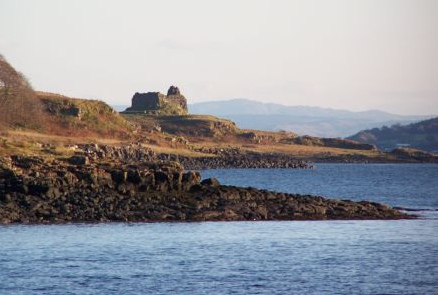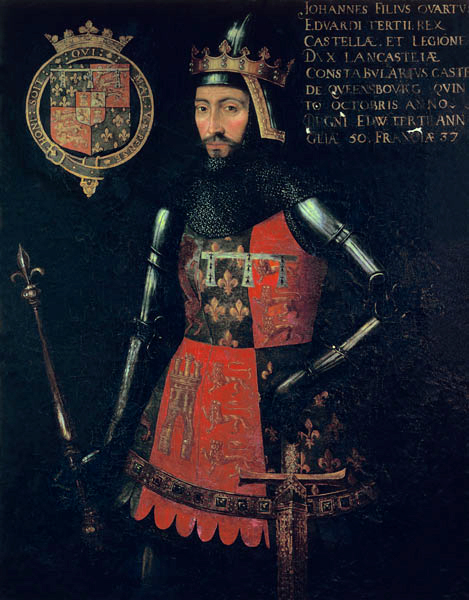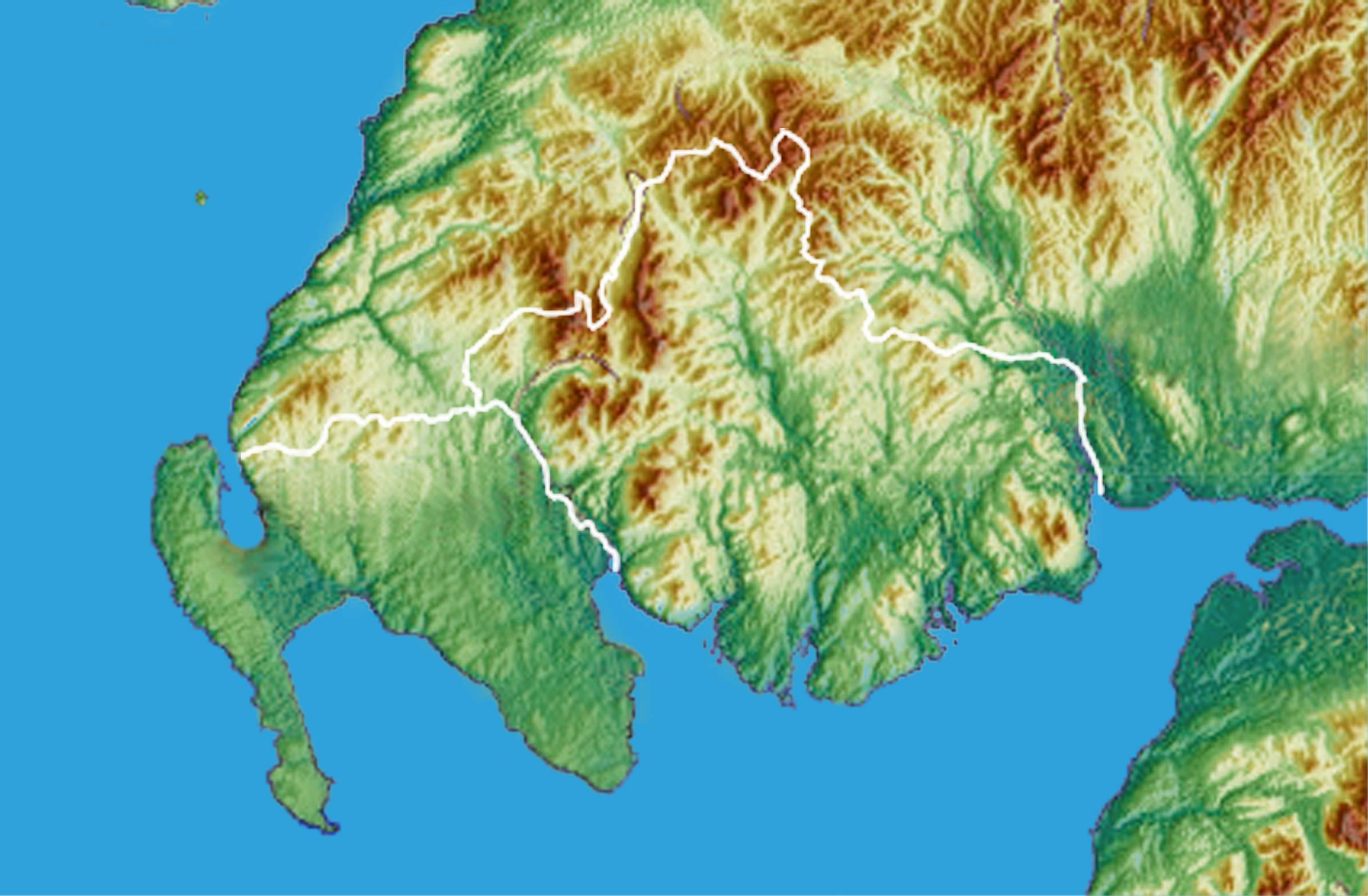|
James Douglas, 9th Earl Of Douglas
James Douglas, 9th Earl of Douglas, 3rd Earl of Avondale KG (1426–1491) was a Scottish nobleman, last of the 'Black' earls of Douglas. Early life The son of James the Gross, 7th Earl of Douglas, by his wife Lady Beatrice Sinclair, daughter to Henry II Sinclair, Earl of Orkney; Douglas was a twin, the older by a few minutes, the younger being Archibald Douglas, Earl of Moray. James was known as "fiery face" due to a birthmark and his temper. He succeeded to the earldom on the murder of his brother William Douglas, 8th Earl of Douglas by King James II and his entourage on 22 February 1452. William had been issued with a letter of safe conduct and joined the King for feasting before Lent. On the second evening, he was stabbed 26 times and his body was thrown out of the window. James denounced his brother's murderers, took up arms against the king, and withdrew his allegiance by disavowing his oath. He and his brothers attacked Stirling a month later, driving a horse thr ... [...More Info...] [...Related Items...] OR: [Wikipedia] [Google] [Baidu] |
William Douglas, 8th Earl Of Douglas
William Douglas, 8th Earl of Douglas, 2nd Earl of Avondale (1425 – 22 February 1452) was a late Medieval Scottish nobleman, Lord of Galloway, and Lord of the Regality of Lauderdale, and the most powerful magnate in Southern Scotland. He was killed by James II of Scotland. Life Douglas was the eldest son of James Douglas, 7th Earl of Douglas, and Beatrice Sinclair, the daughter of Henry Sinclair, Earl of Orkney. His father, having been a part of the conspiracy that led to the " Black Dinner" and execution of the 6th Earl and his brother, on his death only three years later left the title and lands to his eldest son William, who may have taken part in the conspiracy. William gained the lordships of Galloway and Bothwell by marriage (by papal dispensation) to his cousin, Margaret Douglas, Fair Maid of Galloway (daughter of the 5th Earl), thus becoming even more powerful and a danger to the throne. The Earl and his party were issued with a safe conduct for three years, "to ... [...More Info...] [...Related Items...] OR: [Wikipedia] [Google] [Baidu] |
John Douglas, Lord Of Balvenie
John Douglas, Lord of Balvenie (or Balveny, Balvany) (c. 1433–1463) was the youngest of the five Earl of Douglas, Black Douglas brothers, who rebelled against King James II of Scotland. Biography Early life Balvenie was the son of James Douglas, 7th Earl of Douglas and his wife, Beatrice Sinclair, daughter to Henry II Sinclair, Earl of Orkney. Of him there is not much on record prior to 1445 when his father resigned the lands of Balvenie Castle, Balvenie, Boharm, and Drummuir, Botriphnie to him. He is also mentioned as an heir of entail to his brother William Douglas, 8th Earl of Douglas in 1451 In 1448, in retaliation for English raids upon the towns of Dumfries, by Richard Neville, 5th Earl of Salisbury, and Dunbar by Henry Percy, 2nd Earl of Northumberland, Balvenie is said to have "ravaged Cumberland and laid the town of Alnwick in ashes." Northumberland, having had his lands plundered gave chase to Balvenie. Balvenie meanwhile had regrouped with his brother, Hugh Do ... [...More Info...] [...Related Items...] OR: [Wikipedia] [Google] [Baidu] |
Battle Of Lochmaben Fair
The Battle of Lochmaben Fair was an engagement in Lochmaben, Scotland, on 22 July 1484 between Scottish loyalists to James III of Scotland and the rebels Alexander Stewart, Duke of Albany and James Douglas, 9th Earl of Douglas, leading cavalry from England. Both exiles from Scotland, Albany and Douglas invaded with permission but not support of Richard III of England, hoping to encourage rebellion against James. Instead, they were met with armed resistance. The loyalists took the day. Douglas was captured and Albany forced to retreat. douglashistory.co.uk. Retrieved 29 June 2013. Background The unpopular Scottish king James III had been imprisoned in |
John Holland, 2nd Duke Of Exeter
John Holland, 2nd Duke of Exeter, 2nd Earl of Huntingdon (29 March 1395 – 5 August 1447) was an English nobleman and military commander during the Hundred Years' War. His father, the 1st Duke of Exeter, was a maternal half-brother to Richard II of England, and was executed after King Richard's deposition. The Holland family estates and titles were forfeited, but John was able to recover them by dedicating his career to royal service. Earl of Huntingdon, of the Castle, town, manor of Barnstable and manors of Dartington, Fremington, South Molton, Torrington, Devon, Stevington, Bedfordshire, Ardington, Berkshire, Haslebury, Blagdon and Somerset. Holland rendered great assistance to his cousin Henry V in his conquest of France, fighting both on land and on the sea. He was marshal and admiral of England and governor of Aquitaine under Henry VI. Origins He was the second son of John Holland, 1st Duke of Exeter, by his wife Elizabeth of Lancaster. His paternal grandparents ... [...More Info...] [...Related Items...] OR: [Wikipedia] [Google] [Baidu] |
Knight Of The Garter
The Most Noble Order of the Garter is an order of chivalry founded by Edward III of England in 1348. The most senior order of knighthood in the Orders, decorations, and medals of the United Kingdom, British honours system, it is outranked in United Kingdom order of precedence, precedence only by the Award, decorations of the Victoria Cross and the George Cross. The Order of the Garter is dedicated to the image and Coat of arms, arms of Saint George, England's patron saint. Appointments are at the Monarchy of the United Kingdom, Sovereign's sole discretion, typically made in recognition of national contribution, service to the Crown, or for distinguished personal service to the Monarch. Membership of the order is limited to the sovereign, the Prince of Wales, and no more than 24 living members, or Companions. The order also includes Supernumerary Knights and Ladies (e.g., members of the British royal family and foreign monarchs). The order's emblem is a garter (stockings), gar ... [...More Info...] [...Related Items...] OR: [Wikipedia] [Google] [Baidu] |
Treaty Of Westminster (1462)
The Treaty of Westminster (or the Treaty of Westminster-Ardtornish) was signed on 13 February 1462 between Edward IV of England of the House of York and the Scottish John of Islay, Earl of Ross, Lord of the Isles. The agreement proposed that if Scotland was conquered by England, the lands north of the Scottish sea (the Firth of Forth) would be divided between the Lord of the Isles and the Earl of Douglas to be held from the crown of England, while the Earl of Douglas would hold Scotland south of the Firth. Background The Scottish crown in the minority of James III of Scotland had taken the Lancastrian side in the Wars of the Roses by welcoming the fugitive Henry VI of England. Edward IV was forming new alliances with disaffected English and Scottish nobles to reduce the threat posed by the exiled former king, now in the hands of James III's mother Mary of Guelders. Process The Earl of Douglas and his brother John Douglas of Balvenie made their way to the west of Scotland wi ... [...More Info...] [...Related Items...] OR: [Wikipedia] [Google] [Baidu] |
Edward IV Of England
Edward IV (28 April 1442 – 9 April 1483) was King of England from 4 March 1461 to 3 October 1470, then again from 11 April 1471 until his death in 1483. He was a central figure in the Wars of the Roses, a series of civil wars in England fought between the Yorkist and Lancastrian factions between 1455 and 1487. Edward inherited the Yorkist claim to the throne at the age of eighteen when his father, Richard, Duke of York, was killed at the Battle of Wakefield in December 1460. After defeating Lancastrian armies at Mortimer's Cross and Towton in early 1461, he deposed King Henry VI and took the throne. His marriage to Elizabeth Woodville in 1464 led to conflict with his chief advisor, Richard Neville, Earl of Warwick, known as the "Kingmaker". In 1470, a revolt led by Warwick and Edward's brother George, Duke of Clarence, briefly re-installed Henry VI. Edward fled to Flanders, where he gathered support and invaded England in March 1471; after victories at the ba ... [...More Info...] [...Related Items...] OR: [Wikipedia] [Google] [Baidu] |
Wars Of The Roses
The Wars of the Roses, known at the time and in following centuries as the Civil Wars, were a series of armed confrontations, machinations, battles and campaigns fought over control of the English throne from 1455 to 1487. The conflict was fought between supporters of the House of Lancaster and House of York, two rival cadet branches of the royal House of Plantagenet. The conflict resulted in the end of Lancaster's male line in 1471, leaving the Tudors of Penmynydd, Tudor family to inherit their claim to the throne through the female line. Conflict was largely brought to an end upon the union of the two houses through marriage, creating the Tudor dynasty that would subsequently rule England. The Wars of the Roses were rooted in English socio-economic troubles caused by the Hundred Years' War (1337–1453) with France, as well as the quasi-military bastard feudalism resulting from the powerful duchies created by King Edward III. The mental instability of King Henry VI of Englan ... [...More Info...] [...Related Items...] OR: [Wikipedia] [Google] [Baidu] |
James III Of Scotland
James III (10 July 1451/May 1452 – 11 June 1488) was King of Scots from 1460 until his death at the Battle of Sauchieburn in 1488. He inherited the throne as a child following the death of his father, King James II, at the siege of Roxburgh Castle. James III's reign began with a minority that lasted almost a decade, during which Scotland was governed by a series of regents and factions who struggled for possession of the young king before his personal rule began in 1469. James III was an unpopular and ineffective king and was confronted with two major rebellions during his reign. He was much criticised by contemporaries and later chroniclers for his promotion of unrealistic schemes to invade or take possession of Brittany, Guelders and Saintonge at the expense of his regular duties as king. While his reign saw Scotland reach its greatest territorial extent with the acquisition of Orkney and Shetland through his marriage to Margaret of Denmark, James was accused of debas ... [...More Info...] [...Related Items...] OR: [Wikipedia] [Google] [Baidu] |
Attainder
In English criminal law, attainder was the metaphorical "stain" or "corruption of blood" which arose from being condemned for a serious capital crime (felony or treason). It entailed losing not only one's life, property and hereditary titles, but typically also the right to pass them on to one's heirs. Anyone condemned of capital crimes could be attainted. Attainder by confession resulted from a guilty plea at the bar before judges or before the coroner in sanctuary. Attainder by verdict resulted from conviction by jury. Attainder by process resulted from a legislative act outlawing a fugitive (a bill of attainder). The last form is obsolete in England (and prohibited in the United States), and the other forms have been abolished. Middle Ages and Renaissance Medieval and Renaissance English monarchs used acts of attainder to deprive nobles of their lands and often their lives. Once attainted, the descendants of the noble could no longer inherit their lands or income. Atta ... [...More Info...] [...Related Items...] OR: [Wikipedia] [Google] [Baidu] |
Galloway
Galloway ( ; ; ) is a region in southwestern Scotland comprising the counties of Scotland, historic counties of Wigtownshire and Kirkcudbrightshire. It is administered as part of the council areas of Scotland, council area of Dumfries and Galloway. Galloway is bounded by sea to the west and south, the Galloway Hills to the north, and the River Nith to the east; the border between Kirkcudbrightshire and Wigtownshire is marked by the River Cree. The definition has, however, fluctuated greatly in size over history. A native or inhabitant of Galloway is called a Gallovidian. The region takes its name from the ''Gall-Gàidheil'', or "stranger Gaels", Norse–Gaels, a people of mixed Gaelic and Norse descent who seem to have settled here in the 10th century. Galloway remained a Gàidhealtachd area for much longer than other regions of the Scottish Lowlands and a Galwegian Gaelic, distinct local dialect of the Scottish Gaelic language survived into at least the 18th century. A hardy ... [...More Info...] [...Related Items...] OR: [Wikipedia] [Google] [Baidu] |
Threave Castle
Threave Castle is situated on an island in the River Dee, west of Castle Douglas in the historical county of Kirkcudbrightshire in the Dumfries and Galloway region of Scotland. Built in the 1370s by Archibald the Grim, it was a stronghold of the "Black Douglases", Earls of Douglas and Lords of Galloway, until their fall in 1455. For part of this time, the castle and the lordship of Galloway were controlled by Princess Margaret, daughter of Robert III and widow of Archibald Douglas, 4th Earl of Douglas Archibald Douglas, 4th Earl of Douglas, Duke of Touraine (c. 1369 – 17 August 1424), was a Scotland, Scottish nobleman and warlord. He is sometimes given the epithet "Tyneman" (Old Scots: Loser), but this may be a reference to his great- .... In 1449 Threave was regained by William Douglas, 8th Earl of Douglas, Scotland's most powerful magnate, who controlled extensive lands and numerous castles. He fortified Threave with an "artillery house", a sophisticated defe ... [...More Info...] [...Related Items...] OR: [Wikipedia] [Google] [Baidu] |





